In This Issue
The opinions, beliefs and viewpoints expressed in this publication are those of the authors. They do not necessarily reflect the opinions, beliefs, viewpoints or official policies of Autism Society Alberta.
|
|
|
End article-->
Celebrating World Autism Awareness Day 2021
Kitty Parlby
It’s coming up quick! Friday, April 2nd marks World Autism Awareness Day 2021. When did it start, you may ask? It was on November 1, 2007 that the United Nations called for one day a year to be selected to promote autism awareness. On December 18, 2007, the UN General Assembly designated April 2 as World Autism Awareness Day. The very first one was observed in 2008. Back when my son Eric was diagnosed in January 2000, there wasn’t a great deal of understanding about autism in the general population. At that time, the prevalence of autism in Canada was 1 in 150; now it’s 1 in 66.
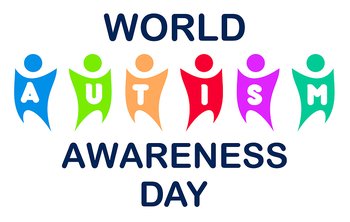 I remember that only the families and individuals affected by autism and specialists that regularly worked with them seemed to have any information to help us. At the beginning, it was very rare for any of Eric’s teachers to have much knowledge in this area, and I started presenting autism workshops in schools in 2005. By then I had been studying autism like crazy for five years, out of necessity. Also, most doctors and nurses we came in contact with knew next to nothing about autism. I remember that only the families and individuals affected by autism and specialists that regularly worked with them seemed to have any information to help us. At the beginning, it was very rare for any of Eric’s teachers to have much knowledge in this area, and I started presenting autism workshops in schools in 2005. By then I had been studying autism like crazy for five years, out of necessity. Also, most doctors and nurses we came in contact with knew next to nothing about autism.
Times have changed as the rate of autism prevalence has increased. Many more health and education professionals have some degree of knowledge now than when we began our journey. And of course, the general public has learned more due to news, movies and social media. Are there lots of misconceptions about autism out there? You bet; but taking the long view, it’s slowly improving. It really helps that we have many more autistic adults sharing their stories and viewpoints now. As for myself, I am now on the other end of things; in a position to share my knowledge and experience to do my part in spreading not only awareness, but understanding and acceptance, as many of you are doing, too!
Want to be part of the celebration this year? These are virtual events, so you can attend no matter where you live! Here’s what’s going on:
YYC World Autism Awareness Day Events
April 2nd, 11am to 2pm MST

This will be a FREE live event on Remo here. The event will feature Autism community vendors and displays, virtual art activities, virtual live entertainment, games, contests and so much more! "Show your AUthentic AUtistic self – Go GOLD on April 2!" Bubble blowing will commence at 12:45 pm. Please register ahead of time for this free event here.
As part of Calgary's recognition of World Autism Awareness Day, AAFS and Autism Calgary have created an art initiative about life in quarantine called Drawing Bubbles. Please join in the fun and start sending in your art! Be creative! The word “bubble” has taken on a new meaning this year, to mean the people closest to you. Here are three questions to help inspire your drawing and/or words based on your bubble:
 Who was in your bubble? Who was in your bubble?- Who did you miss in your bubble?
- What are some activities you did within your bubble?
Digital art and scans of hand-drawn art can be submitted until April 2nd, and will be compiled as a beautiful collage after the virtual YYC WAAD event on April 2nd as one single magnificent collective art piece. Submissions can be emailed to yycwaad@aafscalgary.com. We can also make some art together on the day of the event, on the virtual platform using a whiteboard.
The Autism Society of the Regional Municipality of Wood Buffalo
Autism RMWB has autism awareness/acceptance events happening throughout April. Keep an eye on their website and Facebook page for further details and registration.
- Rock-a-thon (as in rocking chairs): This event was created to bring acceptance and understanding to sensory needs and self-regulation, and most importantly, to normalize stimming.
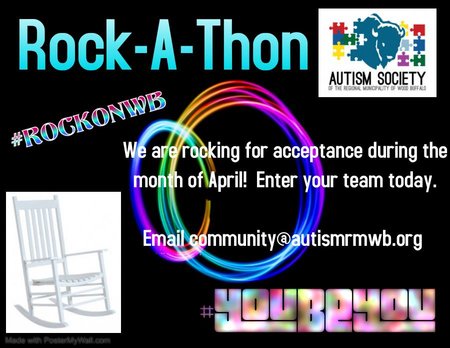
- On April 30th, 2021, Autism RMWB will be hosting a virtual Comedy show, Comics Not Otherwise Specified. This Comedy show and keynote presentation feature four autistic adults who consider themselves “the world’s most awkward boy band”. Keep an eye out on their social media for a link to purchase tickets!
Kitty Parlby is the mother of a young adult with autism. She is a former special needs Educational Assistant and an autism speaker and consultant with Autism Inspirations. She currently works as a Family Support Worker for Autism Society Alberta.
|
|
|
Aging in Autism: Supporting An Autistic Senior
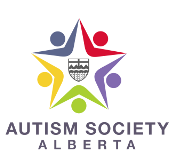
 Everyone becomes a senior, yet not everyone’s care needs as a senior are the same. This is especially true with Autistic Seniors. There is little information on aging and autism, and this is an emerging issue we need to get ahead of. What we do know is that Autism is lifelong, neurodevelopmental, and a spectrum. The needs of an Autistic individual are different for everyone. Everyone becomes a senior, yet not everyone’s care needs as a senior are the same. This is especially true with Autistic Seniors. There is little information on aging and autism, and this is an emerging issue we need to get ahead of. What we do know is that Autism is lifelong, neurodevelopmental, and a spectrum. The needs of an Autistic individual are different for everyone.
Autism Society Alberta’s team of support workers, Autistic peer mentors, parents, professionals, and community agency partners who support seniors have created a toolkit of resources and information to help navigate this complex world. Noting the fact that 1 in 3 Seniors doesn’t typically access the internet, we have included a phone directory for ease in accessing contact information.
Click here to view the toolkit
|
|
|
Kindness and Connection
Karla Power
 Kindness and making connections are two things that are very important to me. Lately I have noticed that these are things that are important to my boys, as well. Kindness and making connections are two things that are very important to me. Lately I have noticed that these are things that are important to my boys, as well.
Last month, Paddy received the kindness award in his class. This is his third year in school and his very first award, and I couldn’t be prouder! At the end of the day, kindness supersedes academic ability for me. When I asked what he did to receive the award, I was told that it was because he was smiling at his classmates. This made me chuckle, because Paddy’s previous interactions with peers included giving them the side eye and stealing their snacks.
Kelton, on the other hand, has always been a sensitive and kind soul! He even cries when watching a show in which the character gets hurt or becomes upset. He is definitely my child! He also enjoys showing kindness through gift-giving. He loves to hand us toys to play with and share his snacks with us.
 The boys have also been making connections lately, through school and at daycare. Paddy seems to enjoy playing with his peers more, and Kelton just loves when the girls at daycare dote on him. Just last month, I received a picture of Paddy engaged in authentic play with his peers. It was Global Play Day, and we were asked to send in a toy from home. I chose a toy piano that he seems to show some interest in. Three of his peers decided to play with him, and when I saw the picture of the moment, it melted my heart! The boys have also been making connections lately, through school and at daycare. Paddy seems to enjoy playing with his peers more, and Kelton just loves when the girls at daycare dote on him. Just last month, I received a picture of Paddy engaged in authentic play with his peers. It was Global Play Day, and we were asked to send in a toy from home. I chose a toy piano that he seems to show some interest in. Three of his peers decided to play with him, and when I saw the picture of the moment, it melted my heart!
The most important connection that the boys have made these past few months is with one another! Paddy has really started to show a keen interest in his baby brother, especially when Kelton is upset. Big brother will bend down and give him intense eye contact, as if he is trying to figure out what is upsetting his brother. It is the sweetest thing to watch, especially since eye contact is not the easiest thing for either of them.
The other day, when Paddy was looking deeply into Kelton’s eyes, I asked Frank to take a video of the moment. As the interaction continued, a magical  thing occurred: Paddy bent down and kissed Kelton on the cheek! It was the sweetest thing ever, and we are so glad that we captured it on video. thing occurred: Paddy bent down and kissed Kelton on the cheek! It was the sweetest thing ever, and we are so glad that we captured it on video.
These are the moments that we live for! The ones that melt your heart and bring tears of joy to your eyes. The ones that make you believe that anything is possible, even though some days feel impossible! I am proud to say that my boys are both making important connections in their lives, and they are also showing how kind they are. That makes this mama feel pretty good!
|
|
|
Estate Planning Series: Part 1
Estate Planning and Discretionary Trusts
Nicole Wiebe
This estate planning series will focus on some of the unique estate planning issues facing families who have a child with disabilities, and also present some of the legal strategies and tools that parents and guardians may be able to use to address such issues.
Parents and guardians of children with disabilities need to take extra care and consideration when they are developing their estate plan. It is important that parents and guardians assess what is needed to ensure that their child has the financial and emotional support that they need for their lifetime, including what different types of private and governmental support and benefits their child is receiving now, or may receive in the future, to assist with such support. Parents and guardians also need to consider the needs for their child during his or her later years, when their child may not qualify for certain private or governmental benefits, or if such benefits are no longer available. Many children with disabilities are not able to save for their later years, and thus may require extra financial support once they no longer qualify for certain private and governmental benefits that they previously received.
It is also important to note that our legislation in Alberta states that parents and guardians must provide adequate maintenance and support for their dependent and adult dependent children. An adult dependent child is any child who is at least eighteen years old of age at the time of the parent’s death and who is unable to earn a livelihood by reason of mental or physical disability.
Parents and guardians have a duty to provide proper maintenance and support regardless of whether or not they provided financial support to their child during their lifetime. If a parent has not adequately provided for a dependent child in their Will or other testamentary document, the child can make a claim against the parent’s estate for adequate support and maintenance, and if successful, may receive a larger share of the parent’s  estate than they were initially to receive. Such claims against an estate can be costly and lengthy, which underscores the importance of seeking and receiving financial and legal guidance and advice when considering your estate plan. Lawyers who practice in this area are able to advise and assist when determining what would be considered “adequate” support in an individual’s own circumstances, and what the consequences of not adequately supporting one’s child may be. estate than they were initially to receive. Such claims against an estate can be costly and lengthy, which underscores the importance of seeking and receiving financial and legal guidance and advice when considering your estate plan. Lawyers who practice in this area are able to advise and assist when determining what would be considered “adequate” support in an individual’s own circumstances, and what the consequences of not adequately supporting one’s child may be.
Parents and guardians must be mindful of private and governmental benefits that their child currently qualifies for or may qualify for in the future when they are structuring their estate plan. You want to make sure that any inheritance that your child receives will not disqualify them from certain private or government benefits. One of the most important examples of this is AISH (Assured Income for the Severely Handicapped).
AISH is a provincial program established in Alberta that provides financial and health-related benefits (such as a monthly living allowance, and child, health, and personal benefits) to eligible adult Albertans under the age of 65, who are legally identified as having severe and permanent disabilities that seriously impede their ability to earn a livelihood. To determine whether an individual is eligible for the AISH program, the applicant's assets are first assessed, along with other criteria, such as age, residency, and medical criteria. For an applicant to qualify for AISH, his or her financial assets cannot exceed $100,000 (there are some exempted assets, such as a house or a Registered Disability Savings Plan/RDSP).
In 2018, the Alberta government made changes to existing legislation to allow for certain qualifying trusts to be set up to provide for individuals with disabilities without negatively affecting their eligibility for AISH. These changes were made to the Assured Income for the Severely Handicapped Act and Regulations, and are significant in the development in planning for the future of loved ones with disabilities, as such changes allow more options to support individuals with disabilities who benefit from AISH.
Prior to the amendments to the AISH legislation, a trust could be included in the calculation of an individual’s assets. This frequently resulted in applicants who were beneficiaries of a trust, including a trust used to manage an inheritance for the applicant, being ineligible for the AISH program. With these changes to the AISH legislation, a person's interest in a qualifying discretionary trust (also known as a Henson Trust) is now explicitly excluded from the calculation of a person's assets. The changes to the legislation also include a one-year period within which assets that have otherwise been received, such as by a gift or outright inheritance, can be invested into a qualifying trust or other exempt asset, such as an RDSP, without affecting an individual’s eligibility for AISH.
 However, it is also important to note that income generated and received by the AISH recipient from the funds in the trust will be considered part of the AISH recipient’s income, as per the AISH legislation, when determining eligibility and the amount of monthly AISH funding one receives. However, it is also important to note that income generated and received by the AISH recipient from the funds in the trust will be considered part of the AISH recipient’s income, as per the AISH legislation, when determining eligibility and the amount of monthly AISH funding one receives.
For people with disabilities, and the loved ones who wish to plan for their future, this is a significant development in the law, and it is important to note when planning for a child’s future. The legislation allows parents to leave assets to their disabled child in a discretionary trust set up by their Wills, without jeopardizing their child's ability to access AISH programs.
If you are deciding to set up a discretionary trust in your Will, it is important that you seek out legal advice so that such trust is set up properly, as certain provisions need to be included in order to properly protect your child’s inheritance and AISH entitlement.
Part Two of this estate planning series will discuss inter vivos trusts that parents or guardians can set up for their disabled child during the parent’s or guardian’s life to further protect AISH entitlement and provide a long-term fund for their child, as well as the requirements of Henson Trusts.
Nicole Wiebe
Associate, Wills, Estate, and Wealth Preservation Group at Dentons Canada LLP
For further information regarding the information contained in this article you can reach Nicole at nicole.wiebe@dentons.com.
|
|
|
Medication
Hope Rudics
“Medication” is an uncomfortable word. I know it makes me feel uneasy, even though I've been on antidepressants for years. Two years ago, I was adamant when I told the psychiatrist that my son didn't need medication, and we could manage. At the time, I barely understood my own mental health, and I didn’t realise how selfish I was actually being. I preach caring for yourself, but I felt overwhelmed by all the stigmas and negative information I was receiving about youth and stimulants. Instead of keeping an open mind like I usually would, and researching for myself, I settled on the thought that I needed to do better than medicating my child. I actually told the psychiatrist "I won't turn my child into a meth head", like I actually knew better than an educated professional! When I look back I feel embarrassed, if not ashamed of my behaviour.
We were managing for a while, scouring sources to find strategies. Then that dreaded day arrived, the first day of a string of problems at school and home. There were constant dysregulation, nasty hurtful words, aggression and sleepless nights. Calls from the school became more frequent. I remember  arriving at the school, and when my son saw me, he asked me to "take my brain out because it keeps telling me to do bad things". We called the pediatrician as soon as we got home, and they were able to see him a week sooner than planned. That was when we made the decision to start on a low dose of a stimulant to see if it could improve his daily life and overall mood. Day 2 was when we started to notice the improvements, as he began to be able to verbalize complex thoughts. It was like his brain had slowed down enough for his mouth to keep up with his thoughts; he didn't stutter, pause or repeat himself the way he did prior. arriving at the school, and when my son saw me, he asked me to "take my brain out because it keeps telling me to do bad things". We called the pediatrician as soon as we got home, and they were able to see him a week sooner than planned. That was when we made the decision to start on a low dose of a stimulant to see if it could improve his daily life and overall mood. Day 2 was when we started to notice the improvements, as he began to be able to verbalize complex thoughts. It was like his brain had slowed down enough for his mouth to keep up with his thoughts; he didn't stutter, pause or repeat himself the way he did prior.
We are now a week in. It would be an understatement to say it has made a little bit of difference, because it has made a world of difference. Stimming is still happening, but it is less physical and less aggressive. He speaks more kindly and gently; his interactions aren't as intense as they once were. He can express himself in a much safer manner, and his dangerous tendencies like elopement are much less frequent. We don't have a full update from the school, but I am extremely optimistic about positive progression, as the calls have also dropped in frequency. Don't forget to pause and listen to your child. Explore your options – sometimes you have to struggle to find what works, but it can be so rewarding for everyone.
|
|
|
Modeling – Part 2
Carmen Moore
This month, I will continue to highlight the Evidence-Based Practice (EBP) of ‘modeling,’ which I introduced in last month’s article. In a nutshell, modelling is simply intentionally showing a learner what we would like them to know or do. This EBP can be a tool you can utilize, especially when introducing a brand new skill. Modeling can be used in conjunction with other EBPs as one piece of a larger puzzle.
Note: Much of the information in this article is from the related AFIRM online module (link below).
A simple mantra I like to use in many areas of my life, especially when setting a new goal/target behaviour, is “I do, We do, You do.” The first few times (as needed), the learner can actively (or passively) observe someone purposely modeling the goal/new skill/behaviour. This helps reduce any anxiety the learner may experience when attempting to gain a new skill or head into a new experience. There is very little pressure or expectation on the learner while basically just having to watch. The timeline for this will vary from person to person. However, it is important to move forward as soon as you can. Do not stay in the modelling stage. Let the learner move past that and begin to take his or her own steps in attempting the skill.
 For example, when teaching my son to cook, we accessed some visual recipes that were simple and broken down into visual step-by-step instructions. The first three times I made the recipe, I simply had him watch me follow the recipe as I tried to talk my thinking through and show him what each step looked like. Eventually we both agreed there were parts that he could take on, starting with the simple ones, like pouring the rice into the water, and then moving to more complex steps, like using a knife. He then began slowly taking over until he was ready to just have me watch while he worked through it all from start to finish. There are now certain recipes that I can trust him to fully complete independently, from start to finish! I do, we do, you do. For example, when teaching my son to cook, we accessed some visual recipes that were simple and broken down into visual step-by-step instructions. The first three times I made the recipe, I simply had him watch me follow the recipe as I tried to talk my thinking through and show him what each step looked like. Eventually we both agreed there were parts that he could take on, starting with the simple ones, like pouring the rice into the water, and then moving to more complex steps, like using a knife. He then began slowly taking over until he was ready to just have me watch while he worked through it all from start to finish. There are now certain recipes that I can trust him to fully complete independently, from start to finish! I do, we do, you do.
What do you do to get started? Actually, the process is the same for each EBP. First, identify the skill or behaviour that you wish to have the learner learn or do. Then, try to collect ‘baseline data’, which basically means how well they can do the skill with no support at the beginning of the process. Once you have that, establish a goal that you eventually want to achieve.
For example, if you wanted the learner to call and make an appointment for a haircut, you could write out a short script, and then model how to read/use the script and record the appointment date and time in the calendar. Have them try it on their own, without added support, to see the level of ability in  the beginning. Once that level is known, make the goal for them to use the phone number to call the hairdresser and make an appointment successfully – first with a script, and then later independently. the beginning. Once that level is known, make the goal for them to use the phone number to call the hairdresser and make an appointment successfully – first with a script, and then later independently.
Then, you get to the work of doing each step of the process while they actively watch you doing it. You can do it step by step and have them watch that portion closely, or do the entire process over and over until the learner is able to take over the portion they are comfortable doing.
In the third article on modeling, I will delve further into the prerequisites needed for the learner that will make this a more effective power tool in your proverbial “tool kit”.
If you are interested in checking out the free online AFIRM modules, click here to view the Modeling module, and click here to view the entire series.
|
|
|
The Light at the End of the Tunnel?
Brandon Rudics
It’s been a few months since I contributed an article here. Truth is, I’m not the biggest fan of writing. But with the news of vaccines becoming more available, and the chance at a somewhat normal summer, I am excited to write an article this month about my personal perspectives about the Covid-19 vaccine, and being an autistic adult who is excited to get vaccinated.
Our world has been turned upside down a little too long now. As someone who embraces change, I am looking forward to the change of hopefully seeing family and friends in person soon. I miss people. I miss face-to-face  conversations. I feel lucky that masks don’t bother me too much, but I won’t miss having to carry a mask with me everywhere. And don’t get me started about those foggy glasses. So in other words, sign me up! I will be in line with bells and bows on to receive the Covid-19 vaccine. conversations. I feel lucky that masks don’t bother me too much, but I won’t miss having to carry a mask with me everywhere. And don’t get me started about those foggy glasses. So in other words, sign me up! I will be in line with bells and bows on to receive the Covid-19 vaccine.
But this had me wondering, how do other autistic adults in my personal network feel about the Covid-19 vaccine? I did some reaching out, and after talking to about fifteen different autistic adults, it turns out that every single one I chatted with is excited to receive the vaccine. Those in my circle want to get out into the world again and see our family and friends – to have some sort of “normalcy” for the upcoming summer.
I will be so excited to see the community come to life after the vaccines are out. Remember though, we are now so used to being inside and isolating that some of us autistic individuals will need help and encouragement to get out of the Covid funk. Please be patient with us, and help us to embrace the change – the change to a world that will hopefully be a little more “normal”.
|
|
|
Health Matters: Why Developmental Disabilities Are A Covid-19 Vaccine Priority

Health Matters, March 17: Alberta’s priority list of health conditions for COVID-19 vaccination is drawing attention from across Canada, because it includes a detailed list of developmental disabilities. As Su-Ling Goh explains, families are breathing a sigh of relief. Click here to watch.

|
|
|
End article-->
Women+ASD Learning+Support Group
Click the poster below to see a full-sized version
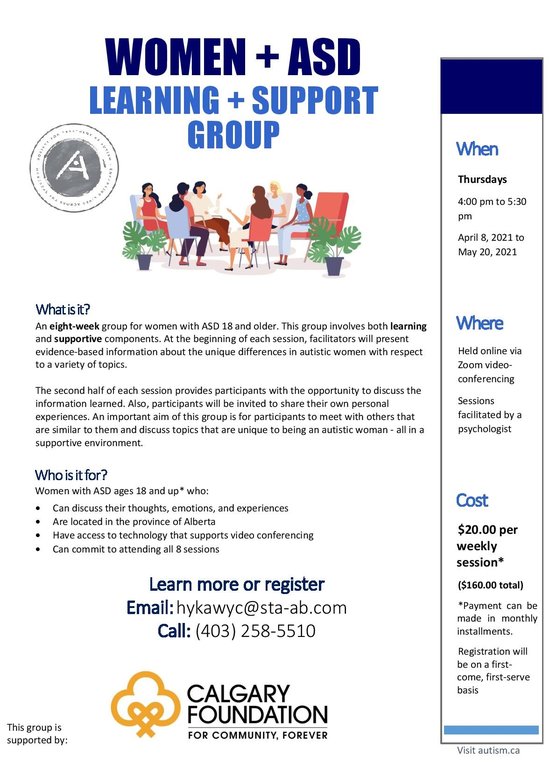
|
|
|
End article-->
How to Support Individuals on the Autism Spectrum Through Grief and Loss
Maureen Bennie

From the Autism Awareness Centre Inc. Blog:
 Death and loss are a natural part of life. All of us will have this experience at different times in our lives. Because of the pandemic, families may be experiencing more loss and changes at this time. There have been so many challenging situations – the death of a loved one, long-term illness, job loss, unavailability of favorite activities, shutdown of community places/spaces, loss of support, changes in routines, and increased isolation. These events are significant, and can cause feelings of grief and despair. Death and loss are a natural part of life. All of us will have this experience at different times in our lives. Because of the pandemic, families may be experiencing more loss and changes at this time. There have been so many challenging situations – the death of a loved one, long-term illness, job loss, unavailability of favorite activities, shutdown of community places/spaces, loss of support, changes in routines, and increased isolation. These events are significant, and can cause feelings of grief and despair.
Sometimes change and loss are expected, and those events can be planned for, like a long-term illness or a divorce. In this instance, a support plan can be made in advance. Loss can also be sudden and take us by surprise, like an accident. Advance support plans won’t be in place for a situation like that.
It’s important to be able to provide support to children and adults on the autism spectrum with the grieving process in experiencing loss. Their reactions may be delayed, or may be more intense than expected. There may also be questions and concerns around making life predictable again, to provide comfort and a sense of well-being.
Reactions to Grief
Emotions
Expressing emotions can be difficult for people on the spectrum, but that doesn’t mean that there are not deep feelings. My daughter, Julia, has a difficult time crying, but is a very sensitive person. Another friend of mine said she cried for the first time at the age of 19. Sometimes, the opposite emotion is shown when grieving, like laughter; however, this doesn’t mean that the person is happy. When my children were younger, they often laughed when I was crying. Emotional reactions can be delayed until they are processed, particularly around traumatic events.
The following reactions can be part of the grieving process, and support should be provided:
- anger
- aggression
- becoming demanding
- anxiousness
- crying a lot
- withdrawing and becoming unresponsive
- appearing calm, unconcerned or in control, detached
Cognitive Concerns
A person may be worried about what caused the event, or that it will happen to them. Many people also feel guilty when a loved one dies. Depending on age and cognitive understanding, they may not fully understand what has happened, when it might end, and who will take care of them.
Some cognitive effects can be:
 difficulty processing information difficulty processing information- confusion
- unable to express feeling or ask questions
- unable to ask for help or clarification around the situation
- talkative – asking the same questions repeatedly, wanting reassurance
- asking about practical things, like who will make their meals
- an increase in problems with executive function skills (problem solving, being on task, getting started)
- feeling out of control
- preoccupation with the person who is gone
- may be worried that the people close to them will also die or leave them
Behavioural Responses
Responses can really vary depending on the person – some will have no reaction, while in others, it may be delayed. Sometimes a reaction can happen months later, making it hard to realize it’s connected to a past event like death or divorce. Behaviours may surface again on the anniversary of a loss. It’s important to try and address the cause of any change in behaviour and provide support.
Some behavioural reactions are:
- throwing things or destroying property
- hurting oneself or others
- increase in repetitive or stim behaviors
- irritability
- wanting to be alone
- regressions and/or loss of skills
Physical Reactions
Loss situations can also cause physical reactions. The body responds to stressful events and loss in numerous ways. Here are a few:
- loss of appetite
- not sleeping well
- personal hygiene tasks are neglected
- aching body
- fatigue
- loss of bowel/bladder control
- intensification of sensory overload
How do we provide support?
There are a lot of materials available to provide support through the grieving process for individuals on the spectrum.
Keep in mind:
 Everyone’s process is different. Everyone’s process is different.- Validate all thoughts and feelings.
- Keep discussions and materials appropriate for both age and developmental level.
- Keep daily routines consistent to provide predictability.
- Be patient.
- This can be a confusing and anxious time, especially if other people at home are acting differently.
- Avoid trying to make things “all better”. This is a process that has to be worked through.
- Try to make abstract concepts like death concrete. Avoid using expressions like "passed away", "they went to heaven", or "we lost them".
- Use social narratives (a personalized story) to explain the details of the situation.
Click here to access a list of resources on death (Open the link and scroll down to "Resources on Death" halfway down the page)
|
|
|
Sensory Issues and Emotions: A Guide to Assisting Children and Adolescents with Self-Awareness and Strategy Development

Thursday, April 8th – 10 am – 11 am
Featuring Lauren H. Kerstein
With this presentation, participants will be given the opportunity to engage in a deeper exploration of sensory issues and the impact they have on our emotions, mental health system and self-regulation. The presentation will guide participants through developing a better understanding of sensory  challenges and strategies that might effectively assist a child with increasing his/her ability to understand and manage sensory issues. challenges and strategies that might effectively assist a child with increasing his/her ability to understand and manage sensory issues.
This presentation will also briefly examine the ways in which anxiety and depression present in children. Finally, this workshop will link sensory challenges to emotional challenges, both by illustrating the ways in which these two systems are related and by offering concrete tools to effectively address both the sensory and emotional difficulties children face.
Please note that this webinar will be presented live. If you are unable to attend on the day of the webinar, you will have access to the recorded webinar on demand.
Click here to register and to see the agenda and presenter biography
|
|
|
End article-->
Upcoming Workshops from the Centre for Autism Services Alberta

Community Safety, Online Workshop
Thursday, April 1 | 6 – 8 p.m.
Does your autistic child or teen run away from you? Do you worry about their safety when out in the community? Then this workshop is for you! The Centre's Community Safety Workshop will identify the skills your child or teen can learn to help increase their safety in the community. Plus, you'll learn various tools and strategies to teach and practice these new skills.
Live Q&A throughout.
Register today for FREE!
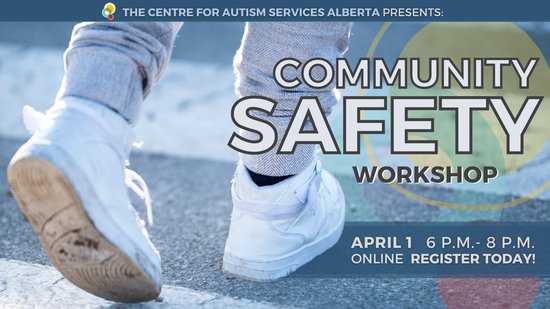
Teaching Your Autistic Child Multiple Languages: Facts and Strategies, Online Workshop
Monday, March 30 | 5 – 7 p.m.
Should you speak more than one language to your child with Autism? This workshop will give you a foundation of knowledge about how children with Autism can learn more than one language and will provide insight into the importance of using your home language with your child. You will spend time making a personalized plan on how to start and/or continue exposing your child to another language. Bring your questions and challenges to discuss and we will provide ideas and strategies to help you!
Live Q&A throughout.
Register today for FREE!

|
|
|
End article--> |
|